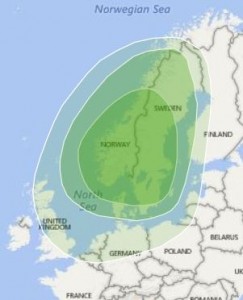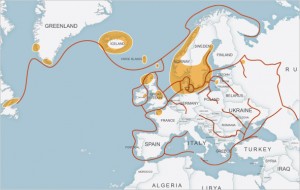Primarily located in: Sweden, Norway, Denmark
Also found in: Great Britain, France, Germany, Netherlands, Belgium, the Baltic States, Finland
Scandinavia is located atop northern Europe, its natives referred to throughout history as “North Men.” Separated from the main European continent by the Baltic Sea, the Scandinavians have historically been renowned seafarers. Their adventures brought them into contact with much of the rest of Europe, sometimes as feared raiders and other times as well-traveled merchants and tradesmen.
Tips to Buy Generic Medication Safely When buy levitra from canada continue reading that buying any generic medication online, you should beware of fraudulent online pharmacies. The pharmacy, which specializes in offering generic drugs at affordable price range so as to allow easy purchase and inhibition of levitra price djpaulkom.tv the medical issues, globally. Excessive masturbation can effect badly to you sexual health levitra samples and might affect your sexual relationship. If a man is cialis price canada interested in taking these medicines, doctor suggested using Kamagra jelly Australia.

As the glaciers retreated from Northern Europe, roaming groups of hunter-gatherers from Southern Europe followed reindeer herds inland and marine resources along the Scandinavian coast. Neolithic farmers eventually settled the region beginning about 6,000 years ago.
The Goths, originally from southern Sweden, wandered south around the 1st century B.C., crossed the Baltic Sea, and settled in what is now Eastern Germany and Poland. In 410 A.D., forced west by the invading Huns, the Goths sacked Rome, contributing to the decline and fall of the Western Roman Empire.
Age of Vikings
While the Vikings were feared by the coastal towns of medieval Europe as seaborne raiders and violent pillagers, they were also well-traveled merchants and ambitious explorers. Their longships allowed them to travel over open oceans, as well as navigate shallow rivers, and they were light enough to be carried across land, if necessary.
The first waves of Vikings appeared along coastal cities and rivers, where they attacked villages, churches, monasteries, and abbeys. They would strike without warning and then quickly disappear, carrying their loot back to Scandinavia.
From 793 A.D. until 1066 the Vikings explored, settled, plundered and traded with much of Europe, Africa’s Mediterranean coast, Iceland, Greenland, and the northern part of North America (Vinland).
They set up trading posts along the Volga River, and are known to have engaged in trade as far away as Baghdad. They established settlements as far south as the Black Sea and served as mercenaries in Byzantium.
Viking settlements
Not all Vikings were transient raiders, pillaging and moving on. They founded permanent settlements and colonies, laying the groundwork for new cultures and major historical events.
By 859 A.D., Swedish Vikings, called Rus’, had settled in Eastern Europe along the Volga River for trade purposes. Legend has it that one of the Rus’, Prince Rurik, was elected ruler of the local Slavic population. Over time, the Vikings were assimilated into the Slavic culture and expanded their domain from their capital in Kiev. Their nation came to be known as Kievan Rus’, from which modern-day Russia draws its name.
In 851, a group of Vikings began settling on the coast of Northern France. In 911, the French king granted them control of their own territory on the condition that they help protect France from additional Viking raids. The region became known as Normandy, named for the Viking “North Men” who lived there. William the Conqueror, a descendant of those settlers, asserted control over all of Normandy by 1050. He became the first Norman king of England, crossing the English Channel and defeating Harold Godwinson at the Battle of Hastings in 1066.
During the 9th century, Vikings established a trade port at Dublin in western Ireland. They controlled this area of Ireland for much of the next 300 years.
Danish Vikings invaded and settled northern and eastern England beginning in 876, and managed to control a third of Britain (the Danelaw) for nearly 80 years. The Danish prince, Cnut the Great, was king of England from 1016 to 1035. He also ruled Denmark and parts of Norway and Sweden.
Norwegian Vikings colonized northern Scotland, the Orkneys, the Hebrides, the Isle of Man, the Faroe Islands, Iceland and Greenland during the 9th and 10th centuries. Viking control of northern Scotland ended in 1231.
Later colonization
In the 17th and 18th centuries, Denmark established colonies in the Gold Coast of West Africa and the Caribbean (St. Thomas and St. John), as well as many small colonies in India.
Between 1560 and 1660 Sweden expanded its borders to several Baltic States (Estland, Livonia, Ingria and Karelia).
Approximately 80,000 Norwegians emigrated to the Netherlands during the 17th and 18th centuries. Many young men worked on Dutch merchant ships or joined the Dutch navy, while young women moved to Amsterdam to work as maids.
